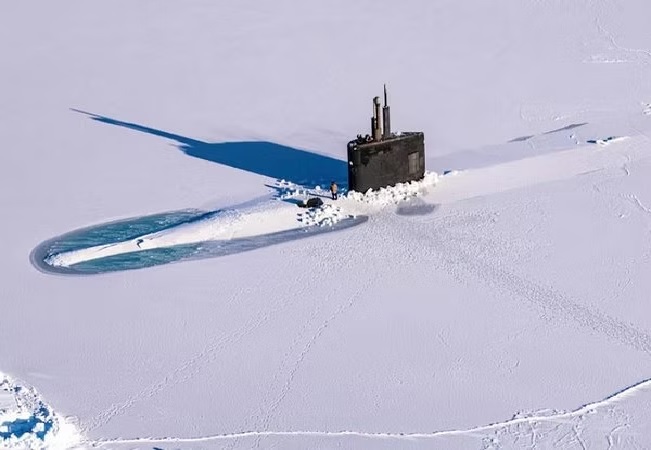US Arctic Strategy 2024: Countering Russia and China in the Icy North

In response to the growing threat posed by Russian and Chinese activities in the Arctic, the United States has unveiled a comprehensive Arctic Strategy for 2024. The strategy aims to bolster America's presence in the icy northern region, emphasizing expanded surveillance, intelligence capabilities, and stronger cooperation with allies.
Expanding Surveillance and Intelligence
The new strategy highlights the need for advanced surveillance and intelligence capabilities in the Arctic. The US plans to deploy more ground-based sensors, space-based sensors, and long-range radar to monitor activities by adversaries. The frigid temperatures of the Arctic present unique challenges, but the US military aims to adapt technologies used elsewhere in the world to the harsh environment of the far north.
Deputy Defence Secretary Kathleen Hicks emphasized the importance of readiness in the Arctic, stating, "Ensuring that our troops have the training, the gear, and the operating procedures for the unique Arctic environment may be the difference between mission success and failure."
Addressing Climate Change Impact
Climate change is melting Arctic ice, previously acting as a natural barrier against adversaries. This has opened new pathways for Russia and China to exploit the region's resources and strategic positions. The strategy recognizes the need to invest in infrastructure to support Arctic operations, noting that much of the legacy Cold War-era infrastructure has deteriorated due to the harsh environment and lack of investment.
Strengthening Alliances
A significant advantage for the new Arctic strategy is the accession of Sweden and Finland to NATO. With their inclusion, every Arctic nation, except Russia, is now part of the Western alliance. The US has praised the capabilities of Swedish and Finnish forces in the Arctic and plans for increased joint exercises and cooperation to counter Russian and Chinese activities.
Russian and Chinese Activities
The strategy outlines concerns over increased Russian and Chinese cooperation in the Arctic. Deputy Assistant Secretary of Defence for the Arctic, Iris Ferguson, highlighted recent joint naval patrols by Russia and China near Alaska's Aleutian Islands as a notable development. This cooperation is viewed with caution, as it could indicate a growing strategic partnership between the two nations in the region.
China has declared itself a "near-Arctic state" and has been actively investing in the region, including in Russian energy projects. This has raised concerns about China's intentions and its potential military implications. The Pentagon expects the Russian-Chinese military relationship to evolve, with increasing levels of Chinese military research and operations in the Arctic.
Challenges Ahead
While the strategy addresses the immediate threats and outlines a path for enhanced US presence and capabilities in the Arctic, the challenges remain significant. The Arctic is warming faster than any other region on the planet, opening up new sea routes and access to untapped resources. This has attracted interest from various nations, making the Arctic a focal point of geopolitical competition.
The United States sees China as a potentially destabilizing force, with its economic and military power challenging the established order. The Pentagon considers China its "pacing challenge" for the foreseeable future, including in the Arctic.
In summary, the 2024 Arctic Strategy reflects the US's commitment to countering Russian and Chinese expansion in the region, ensuring a robust presence, and safeguarding its interests in the rapidly changing Arctic environment.


